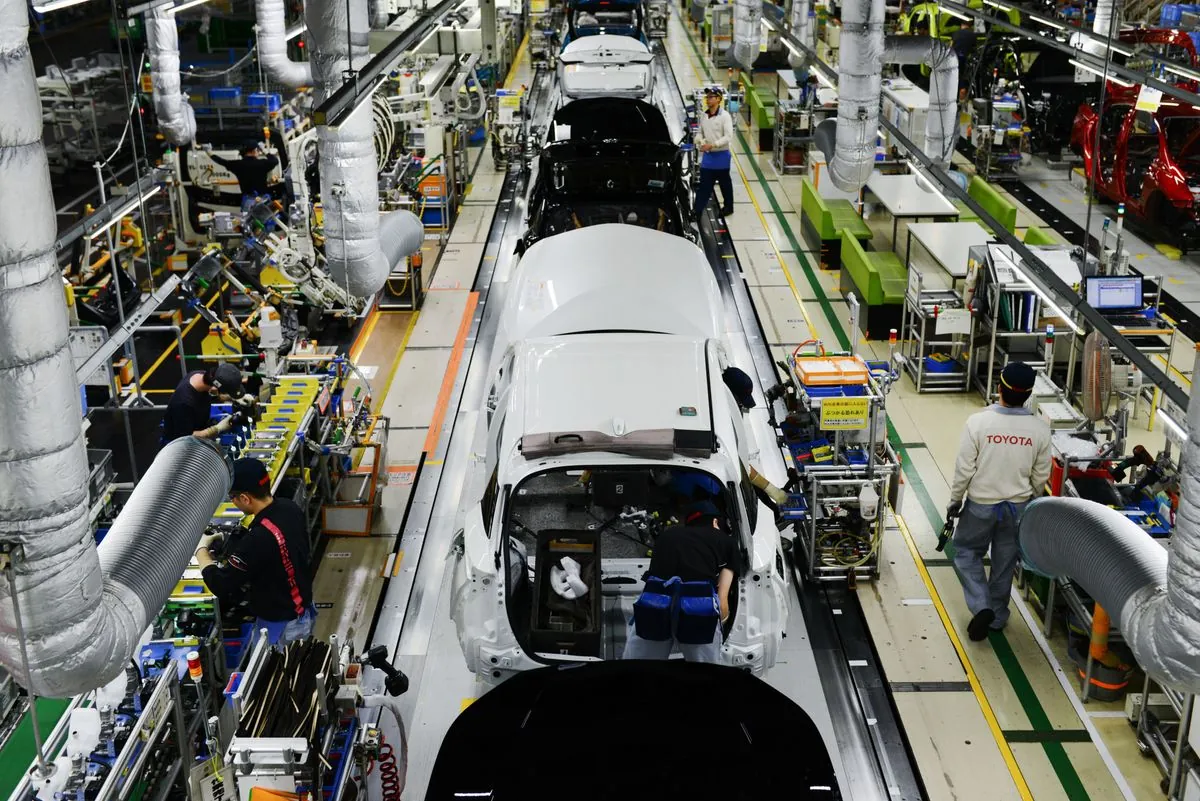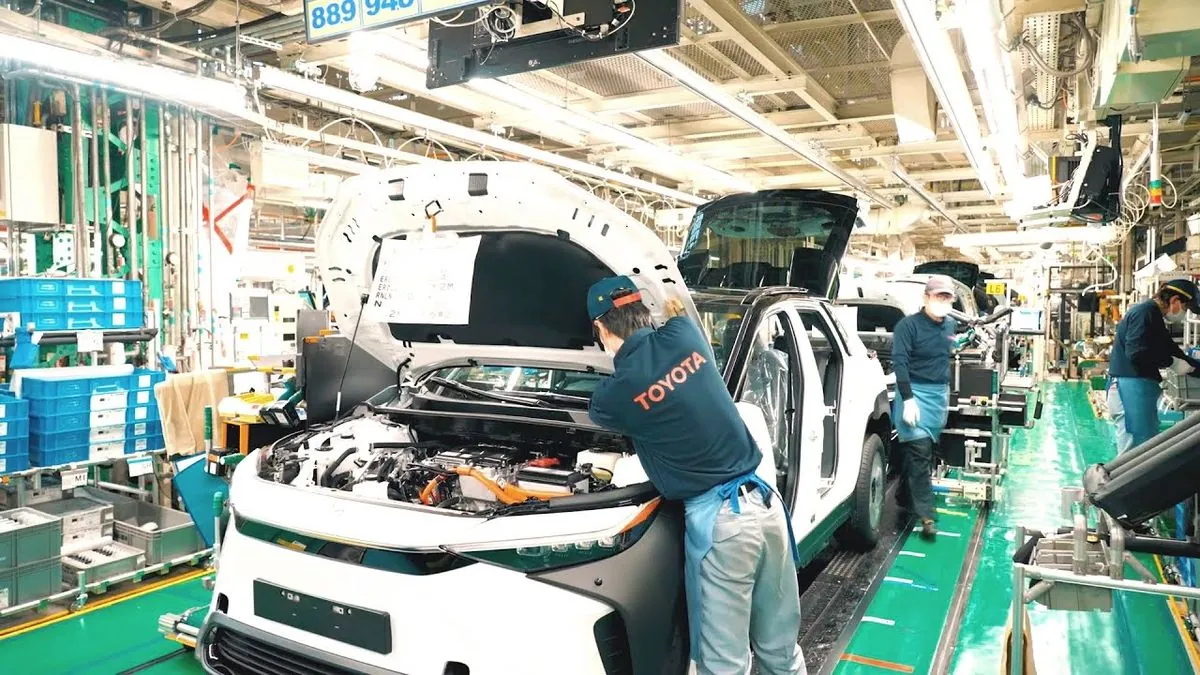Japan's Industrial Output Faces Headwinds Amid Economic Challenges
Japan's industrial production expected to decline in August due to weak overseas demand and typhoon disruptions. Retail sales projected to rise, while job market shows slight improvement.

Japan's industrial sector is anticipated to face a setback in August 2024, with production expected to decline by 0.9% compared to the previous month. This projection comes after a 3.1% increase in July, highlighting the volatile nature of the country's manufacturing landscape.
Takeshi Minami, chief economist at Norinchukin Research Institute, attributes this downturn to several factors, including sluggish global economic growth and underperforming high-tech exports. The automobile industry, a cornerstone of Japan's economy, is also grappling with certification issues, further impacting overall industrial output.
The anticipated decline in industrial production underscores the challenges faced by the world's third-largest economy. Japan's heavy reliance on exports makes it particularly susceptible to global economic fluctuations. This vulnerability is exacerbated by the country's aging population and low birth rates, which have led to labor shortages in various sectors.

Typhoon Shanshan, which struck Japan in late August 2024, added to the production woes. The storm forced temporary closures of factories operated by major companies such as Toyota and semiconductor firm Renesas. This disruption likely contributed to the downward pressure on factory output.
Despite these challenges, Japan's economy continues to show resilience. The country's GDP grew at a solid pace in the second quarter of 2024, albeit slightly slower than initially reported. This growth has been supported by rising wages and increased personal and corporate spending.
"Analysts expect the economy will continue to improve, supported by rising wages and personal and corporate spending, though risks remain from external factors such as a potential slowdown in the U.S. economy and sluggish Chinese demand."
Japan's retail sector offers a glimmer of hope amidst the industrial challenges. Retail sales are projected to rise by 2.3% in August 2024 compared to the previous year, following a 2.6% increase in July. This growth is attributed to strong demand for clothing and preserved food, partly due to the aftermath of Typhoon Shanshan and an earthquake.
The country's job market also shows signs of improvement. The unemployment rate is expected to decrease slightly to 2.6% in August from 2.7% in July, while the jobs-to-applicants ratio is anticipated to remain steady at 1.24.
Japan's economic landscape is shaped by various factors, including its advanced manufacturing sector, particularly in electronics and automobiles. The country has been implementing "Abenomics," a set of economic policies aimed at revitalizing the economy, and maintaining ultra-low interest rates to stimulate growth.
As a leader in robotics and automation technology, Japan continues to invest heavily in research and development, particularly in high-tech industries. The country is also promoting tourism and increasing women's participation in the workforce to boost economic growth.
While Japan faces challenges such as a high debt-to-GDP ratio and deflationary pressures, it remains a key player in the global economy. As a member of the G7, Japan's economic performance has far-reaching implications for international trade and financial markets.
The upcoming release of factory output and retail sales data on September 30, 2024, followed by jobs data on October 1, 2024, will provide further insights into Japan's economic trajectory. These figures will be crucial for policymakers and analysts in assessing the country's progress in navigating its complex economic landscape.


































